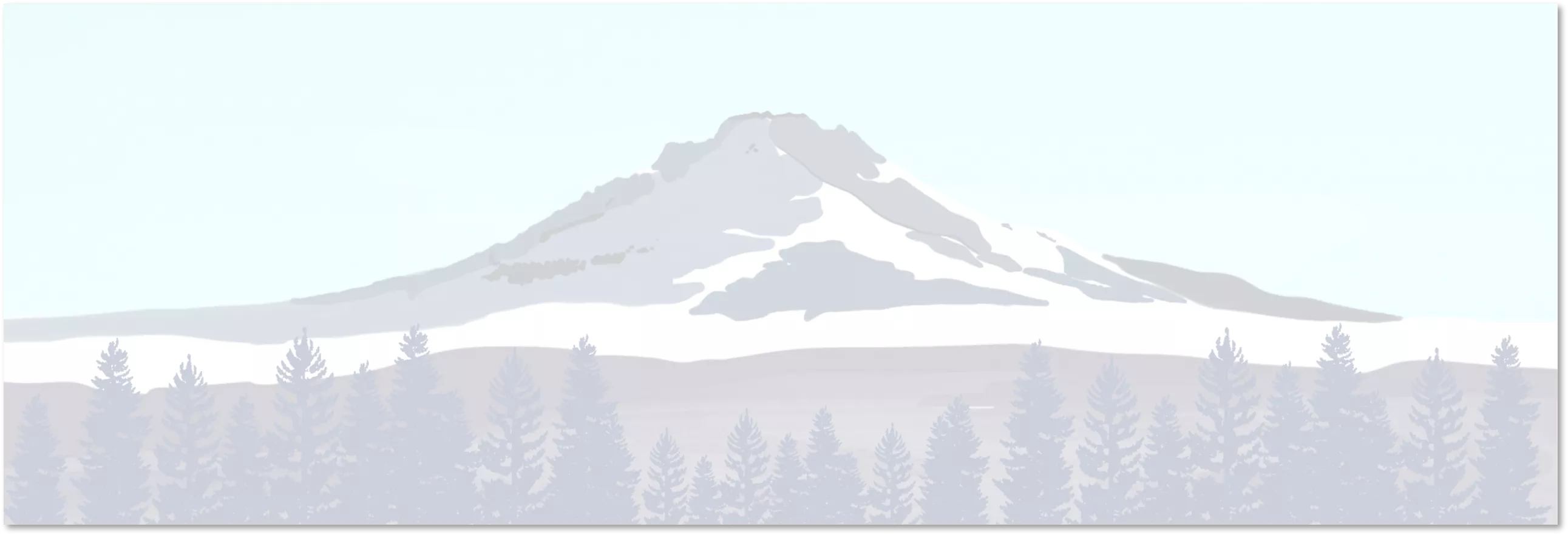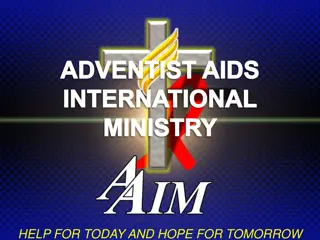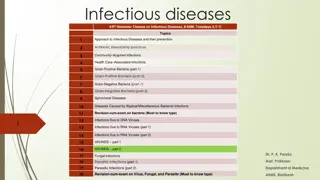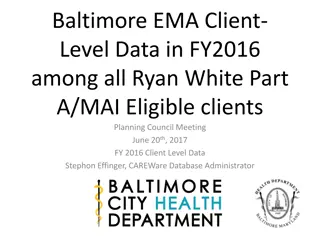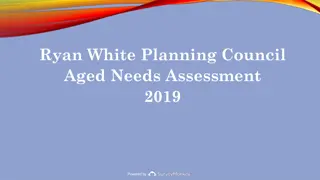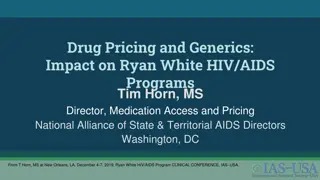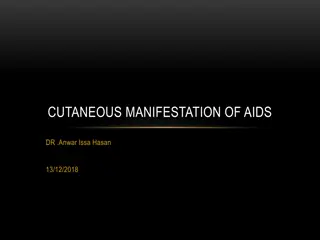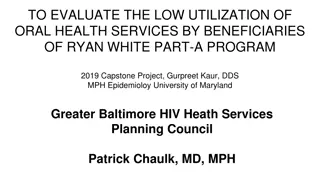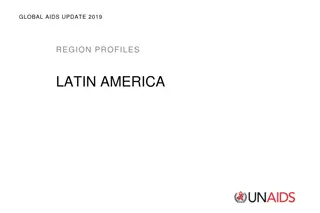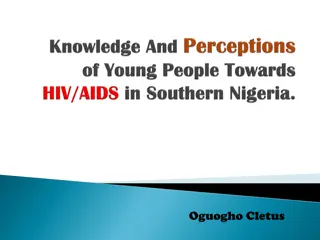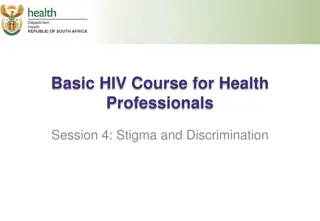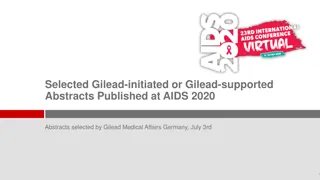2023 Ryan White HIV AIDS Program Clinical Conference
Explore the 2023 Ryan White HIV/AIDS Program Clinical Conference led by Dr. Laura W. Cheever, highlighting key areas such as financial relationships, learning objectives, HRSA HAB vision and mission, bureau updates, and a budget history overview from FY 1991 to FY 2023.
Download Presentation

Please find below an Image/Link to download the presentation.
The content on the website is provided AS IS for your information and personal use only. It may not be sold, licensed, or shared on other websites without obtaining consent from the author. Download presentation by click this link. If you encounter any issues during the download, it is possible that the publisher has removed the file from their server.
E N D
Presentation Transcript
2023 Ryan White HIV AIDS Program Clinical Conference Laura W. Cheever, MD, ScM Associate Administrator, HIV/AIDS Bureau (HAB) Health Resources and Services Administration Rockville, MD
2023 Ryan White HIV AIDS Program Clinical Conference Laura Cheever, MD, ScM Associate Administrator HIV/AIDS Bureau (HAB) | Health Resources and Services Administration
Financial Relationships With Ineligible Companies (Formerly Described as Commercial Interests by the ACCME) Within the Last 2 Years Dr Cheever reported no relevant financial relationships with ineligible companies. (Updated November 8, 2023)
Learning Objectives After attending this presentation, learners will be able to: Describe the implications of policy priorities and ways to adapt clinical practices to align with programmatic goals Implement and adopt components of the Ryan White HIV/AIDS Program into clinical care and practice Describe the effective utilization of Ryan White HIV/AIDS Program data to identify priority populations and promote equity in health outcomes 4
HRSA HAB Vision and Mission Vision Optimal HIV care and treatment for all to end the HIV epidemic in the U.S. Mission Provide leadership and resources to advance HIV care and treatment to improve health outcomes and reduce health disparities for people with HIV and affected communities. 5
Budget History: Ryan White HIV/AIDS Program Appropriations FY 1991 - FY 2023 $1,000,000 $900,000 $800,000 Part A $700,000 Part B Base* $600,000 Part B ADAP $ in Thousands Part C $500,000 Part D $400,000 Part F Dental $300,000 Part F AETC $200,000 SPNS EHE $100,000 $0 *Part B Base includes Emerging Communities 1994 2013 1991 1992 1993 1995 1996 1997 1998 1999 2000 2001 2002 2003 2004 2005 2006 2007 2008 2009 2010 2011 2012 2014 2015 2016 2017 2018 2019 2020 2021 2022 2023 7
HRSAs Ryan White HIV/AIDS Program By the Numbers: 2022 * Viral suppression is based on data for people with HIV who had at least one outpatient ambulatory health services visit and at least one viral load test during the measurement year and whose most recent viral load test result was less than 200 copies/mL. ** Clients self-identified as 25.8% White and less than 2% each American Indian/Alaska Native, Asian, Native Hawaiian/Pacific Islander, and persons of multiple races. Hispanics/Latinos can be of any race. 8 Source: HRSA. Ryan White HIV/AIDS Program Annual Data Report (RSR) 2022. Does not include AIDS Drug Assistance Program data.
Significant progress has been made in viral suppression among priority populations, 2010 and 2022 20.1 24.9 23.1 100 Inequities remain among priority populations: Blacks/African Americans Transgender people Youth (13 24 years) People with unstable housing 91.3 90.2 89.6 88.5 86.4 87.1 RWHAP overall, 2022 (89.6%) 90 83.8 77.9 80 73.6 71.9 69.5 68.5 RWHAP overall, 2010 (69.5%) 70 Viral suppression (%) 63.3 61.5 60 54.8 46.6 50 40 30 2010 20 2022 10 0 RWHAP Overall Hispanic/ Latino Gay, bisexual, and other men who have sex with men People who inject drugs Black/African American Transgender clients Youth Unstable housing (13-24 years) 23.6% 23.8 37.2 9 Source: HRSA. Ryan White HIV/AIDS Program Annual Data Report (RSR) 2022. Does not include AIDS Drug Assistance Program data.
2024 National Ryan White Conference (NRWC) Updates Dates and Location Dates and Location Themes Themes Format Format Innovating to End the HIV Epidemic: Empowering communities, Expanding partnerships, Implementing interventions August 20-23, 2024 Hybrid, in-person and virtual participation. Marriot Marquis Washington, DC Purpose Purpose Practice Models Practice Models Attendees Attendees Up to 3,500 in-person attendees can participate. Delivers program and policy updates, share innovative care models, and provide training and TA to RWHAP recipients; federal, national, state, and local stakeholders; health care and service delivery providers; and people living with HIV. A forum for best practice models that help attendees facilitate a coordinated response to HIV-related health disparities.
2024 National Ryan White Conference Update Abstract submissions for the 2024 National Ryan White Conference are now open and will close on December 15, 2023 If your abstract is approved, you must present in person. Piloting a subset of abstracts for presentations in Spanish! https://ryanwhiteconference.hrsa.gov/
Medicaid Continuous Enrollment Unwinding While there is wide variation across states, of the renewals that were due in May, preliminary CMS data found that: About 42% of renewals resulted in people successfully being able to keep their Medicaid or CHIP coverage so far. About 37% of renewals resulted in someone losing Medicaid or CHIP coverage. Of those that lost coverage, 77% were due to procedural reasons like not returning a renewal form. About 20% of renewals were still being processed by Medicaid and CHIP agencies. As full Medicaid renewals are underway, it is critically important to ensure that individuals do not lose coverage due solely to administrative processes. 13
Recently Released HAB Program Letters Access HAB Program Letters: https://ryanwhite.hrsa.gov/ grants/program-letters 14
Quality of Life (QoL) Framework HAB HAB Quality of Quality of Life Life Framework Framework 15 Adapted from Basavaraj, K. H., Navya, M. A., & Rashmi, R. (2010). Quality of life in HIV/AIDS. Indian journal of sexually transmitted diseases and AIDS, 31(2), 75.
QoL Framework: Key Messages HAB is committed to promoting QoL in partnership with our staff and stakeholders. This commitment is one of many ways we bring the HAB Vision, Mission, and Strategic priorities to life. We welcome opportunities to join with communities and our federal partners to align our QoL activities and build a common agenda. The new HAB QoL Framework is one tool that can be used to increase and share our knowledge of this important construct that significantly impacts our vision of realizing optimal HIV care and treatment for all to end the HIV epidemic in the U.S. 16
Ryan White HIV/AIDS Program (RWHAP) Activities 17
Recent Eligibility Technical Expert Panel (TEP) Streamlining Eligibility Across the Ryan White HIV/AIDS Program virtual TEP (Aug 24-25, 2023) Day 1 focused specifically on RWHAP AIDS Drug Assistance Program (ADAP) recipients Day 2 focused more broadly on all RWHAP recipients, Parts A-D 18
A Status Neutral Approach to Improve HIV Prevention and Health Outcomes for Racial and Ethnic Minorities (FY 2023 FY 2026) Purpose A three-year initiative to develop, implement, and evaluate status neutral strategies within Ryan White HIV/AIDS Program Part A jurisdictions for racial and ethnic minority subpopulations who need HIV prevention services. Project focuses on the prevention pathway, using existing RWHAP non-medical case management (NMCM) model for those who test negative and are at substantial risk for HIV 19
Status Neutral Approach MHAF Recipients Funded four implementation sites at $500,000 each and one Evaluation and Technical Assistance Provider (ETAP) at $2,650,000 in year one Implementation sites cooperative agreement recipients: Clark County (Las Vegas) Hennepin County (Minneapolis) Bexar County (San Antonio) County of San Diego ETAP: JSI Research & Training Institute Inc. 20
HRSA SPNS Initiative: Using Innovative Intervention Strategies to Improve Health Outcomes among People with HIV 2iS LGBTQ+ LGBTQ+ Youth Youth Telehealth Telehealth Substance Substance Use Use Disorder Disorder Incarceration Incarceration Experience Experience
RWHAP Part D Communities of Practice Update Purpose: Facilitate the delivery of evidence-informed interventions and promising strategies to improve family-centered services to WICY with HIV in HRSA-funded RWHAP Part D provider organizations and HRSA- funded organizations serving similar populations. The Communities of Practice will focus on three important areas: Pre-conception counseling, including sexual health Youth transitioning from youth services to adult care Trauma informed care 23
HRSA Ryan White HIV/AIDS Program (RWHAP) Center for Quality Improvement and Innovation (CQII) CQII s Impact Now Collaborative is a national quality improvement initiative that: Maximizes the viral suppression rates Focuses on RWHAP recipients and subrecipients that have the highest potential for a measurable national impact Enrolls up to 30 RWHAP providers to raise their viral suppression rates to the national viral suppression mean and beyond The 18-month learning collaborative aims to improve health outcomes and advance local quality improvement capacities. 24
Modernizing the AETC Regional Program in FY 2024 Competing in FY 2024 01 Fostering Partnerships 02 Data Utilization 03 Improving Program Coordination and Accessibility 04 25
Ryan White HIV/AIDS Program (RWHAP) Data Updates 26
RWHAP Compass Dashboard Updates for 2023 Release The updated RWHAP Compass Dashboard includes: Our latest RSR and ADR program data Several functionality and design enhancements to optimize user-friendliness Extensive under the hood improvements to boost performance and substantially reduce page load times More information at: https://targethiv.org/RWHAPCompass 27
HRSA HAB Data Resources Interactive data visualization dashboard Slide decks Data Reports https://ryanwhite.hrsa.gov/data 28
Ending the HIV Epidemic in the U.S. (EHE) Initiative Updates 29
Achieving the Ending the HIV Epidemic in the U.S. Goals People newly diagnosed with HIV People with HIV out of care People with HIV in care Enhance linkage to care Enhance engagement in care Expand re- engagement in care Improve retention in care Improve viral suppression rates Decrease disparities 30
HRSA HAB to End the HIV Epidemic in the United States (EHE) Initiative Overview For FY 2023, HRSA announced that approximately $152 million was awarded to EHE recipients: 39 metropolitan areas and eight states awarded $139 million (Ryan White HIV/AIDS Program Parts A and B jurisdictions) Two organizations (Technical Assistance Provider and Systems Coordination Provider) awarded $8 million 11 Ryan White HIV/AIDS Program AIDS Education and Training Center (AETC) Program EHE recipients awarded $5 million JURISDICTIONS COMMUNITY ENGAGEMENT SYSTEMS COORDINATION TA AND CAPACITY BUILDING 31
Ending the HIV Epidemic in the U.S. (EHE) Infographic Highlighting Year 2 data from the Ending the HIV Epidemic in the U.S. (EHE) initiative RSR data AETC data Available at: https://ryanwhite.hrsa.gov/resources/ hivaids-bureau-infographics 32
HRSAs HIV/AIDS Bureau (HAB) Ending the HIV Epidemic in the U.S. (EHE) Initiative Year Two Data: 2021 Source: Custom data analysis from the HIV/AIDS Bureau Ryan White HIV/AIDS Program Services Report, January through December 2021, and the HIV/AIDS Bureau AIDS Education and Training Center Data System, July 2020 through June 2021. 33
HRSAs HIV/AIDS Bureau (HAB) Ending the HIV Epidemic in the U.S. (EHE) Initiative Year Two Data: 2021 Source: Custom data analysis from the HIV/AIDS Bureau Ryan White HIV/AIDS Program Services Report, January through December 2021, and the HIV/AIDS Bureau AIDS Education and Training Center Data System, July 2020 through June 2021. 34
HRSAs HIV/AIDS Bureau (HAB) Ending the HIV Epidemic in the U.S. (EHE) Initiative Year Two Data: 2021 Source: Custom data analysis from the HIV/AIDS Bureau Ryan White HIV/AIDS Program Services Report, January through December 2021, and the HIV/AIDS Bureau AIDS Education and Training Center Data System, July 2020 through June 2021. 35
EHE Recipient Activities, Innovation, and Impact Innovation Activities Impact Rideshare transportation services At home and pop-up HIV testing programs Integration of community health workers into HIV care teams to fill health literacy gaps and more Expanded service access in jails Provision of support services (e.g., psychiatry, housing and rental assistance, and food) Gender affirming care support through hormone therapy Data systems to track clients Equipment provision, such as phones and tablets Expanded pools of clients who are eligible to receive services Recipients closed gaps in care specific to their clinics needs Expanded service access via expanded clinic hours, telehealth and mobile health services, home visits Increased staffing and support for EHE clients Increased evaluation and data to care activities EHE funding addressed social determinants of health Infrastructure and workforce development New and expanded partnerships Community engagement Information and social media dissemination Linkage, retention, and adherence Employing community health workers and peer navigators Telehealth/technology Service expansion and service delivery improvements Cluster detection and response Ultimately, EHE activities work to increase linkage, retention, adherence, and viral suppression. Source: Custom analysis from the HIV/AIDS Bureau EHE Progress Reports, March 2021 through February 2022 submitted by 39 Part A and 8 Part B recipients that encompass the EHE jurisdictions. 36 36
EHE Year 2 Qualitative Summary of Progress March 2021 February 2022 Uses narrative information from EHE progress reports submitted during the second year of the EHE initiative to tell the story of HAB EHE activities and accomplishments, lessons learned, and best practices. 37
Contact Information Connect with HRSA Laura Cheever Associate Administrator HIV/AIDS Bureau (HAB) Health Resources and Services Administration (HRSA) Email: Lcheever@hrsa.gov Phone: 301.443.1993 Learn more about our agency at: www.HRSA.gov Sign up for the HRSA eNews FOLLOW US: 38 38


